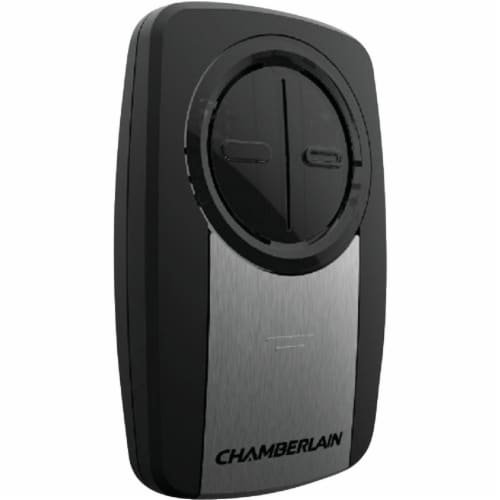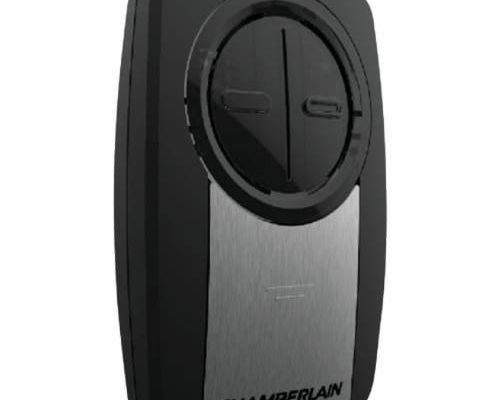
Honestly, garage door technology isn’t rocket science, but it isn’t plug-and-play either. Chamberlain is a big name in the game, known for their sturdy, reliable remotes. Universal openers, on the other hand, sell the dream of “one remote to rule them all.” But can you actually get a Chamberlain remote to work with a universal garage door opener? Let me walk you through the confusion, the possible solutions, and the occasional tech hiccup—kind of like explaining a tricky board game to a newbie, one move at a time.
How Chamberlain Garage Remotes Communicate With Openers
Most garage remotes, including Chamberlain, don’t just send a simple “open” or “close” command. They use rolling code technology for security. This means each time you hit the button, the remote and opener “agree” on a new code. Imagine two friends with secret handshakes—every time they meet, they change it up to stay ahead of anyone watching.
Chamberlain remotes are specifically built to pair with Chamberlain openers using this rolling code system. Sometimes, the remote also works with brands under the same parent company, like LiftMaster or Craftsman, if they share similar technology. These remotes aren’t just dumb buttons—they’re little computers, making decisions every second.
Here’s the catch: not all universal openers speak this language. Some support rolling code, but not always the exact version Chamberlain uses. That’s like trying to use a charger plug from Europe in a U.S. outlet—close, but not quite right unless you use an adapter.
If you’re just getting started, it helps to check both your remote and opener for compatibility labels, frequencies (like 315 MHz or 390 MHz), and whether they mention things like Security+ or Security+ 2.0. That’s what tells you if they can have that secret handshake.
What Makes a Universal Garage Door Opener “Universal”?
The word “universal” can be a little misleading. It doesn’t always mean “works with absolutely everything.” Think of it like a universal TV remote: it’ll change the channel on most TVs, but a few weird models might ignore it completely.
Universal garage door openers are built to support several kinds of coding systems:
- Fixed code garage doors (the older models—simple but way less secure)
- Rolling code with various frequencies
- Some even have “learning” buttons to sync with popular brands, including Chamberlain
But here’s the thing: not all universal remotes play nice with all versions of Chamberlain technology, especially if your opener is newer or has advanced encryption. If you have a Chamberlain remote and want it to work with a different “universal” opener, you’ll want to find out which code types and frequencies your opener supports.
Quick tip: Check your garage’s control box for a “learn” button and look up what kind of code system it uses. That tiny bit of info can save you hours of frustration (and maybe a few angry mutters in your driveway).
Pairing a Chamberlain Remote With a Universal Garage Door Opener
Pairing, or “syncing,” your Chamberlain remote with a universal opener is a bit like syncing your phone to Bluetooth speakers—sometimes it’s instant, sometimes it just… doesn’t connect. Here’s a step-by-step guide for beginners:
Most pairing problems come down to mismatched frequencies or incompatible code systems—not user error.
- Find the “Learn” or “Program” button on your garage opener. Usually, this is a colored button near the antenna wire at the back or side of the control unit.
- Press and hold the button until the indicator light comes on. This puts the opener in “pairing” mode for about 30 seconds.
- Press the button on your Chamberlain remote. Watch for the opener light to blink—this means they’ve exchanged codes.
- Test the remote by pressing it again—your garage should respond. If not, check battery strength and repeat the process. Sometimes it takes a couple of tries, especially if the timing is off.
If things don’t work, try resetting the remote (instructions are in the Chamberlain manual), or check if your universal opener officially supports Chamberlain’s rolling code system. If you still hit a wall, it might be an issue of complete incompatibility.
Common Problems When Using Chamberlain Remotes With Universal Openers
Garage tech can be finicky. If you can’t get your Chamberlain remote to work with a universal opener, odds are high you’re running into one of these issues:
- Incompatible coding. Chamberlain Security+ 2.0, for example, may not be supported by every universal opener. Trying to force a handshake between two “languages” just won’t work.
- Frequency mismatch. If your Chamberlain uses 315 MHz but your opener expects 390 MHz, it’s like tuning a radio to the wrong station.
- Battery problems. Weak signals from a fading battery can cause frustrating false negatives. Always swap in a fresh battery before troubleshooting deeper.
- Limited memory slots. Some openers can only remember a handful of remotes at once. If you’ve filled the memory, the opener might ignore new pairing attempts.
Here’s where a little patience and a double check of the manual can save the day. No shame in pulling up a YouTube video and following along step by step—most folks are surprised how tricky syncing can be until they’ve done it a couple of times.
Comparing Chamberlain Remotes and Universal Alternatives
You might be wondering: Why not skip the pain and just use a universal remote from the start? Well, here’s the rundown.
Chamberlain-branded remotes are tailor-made for their systems. If you’re looking for guaranteed compatibility and full range of features (three buttons, security, fast response), you really can’t beat the real thing. They’re reliable and easy to reset or sync, and they tend to last longer with good batteries.
Universal remotes, on the other hand, are a one-size-fits-most solution. They’re fantastic if you’ve lost the original or want one clicker for multiple openers (like if you move or inherit a new garage). However, universal remotes sometimes drop advanced features—like specific rolling code support or multi-door controls.
| Feature | Chamberlain Remote | Universal Remote |
| Compatibility | Highest with Chamberlain openers | Good with most, spotty for latest security tech |
| Setup | Usually quick, brand-specific | Setup varies, sometimes requires code lookup |
| Features | All brand features supported | Basic open/close; extra features may not work |
| Cost | Medium | Usually lower |
So, if you want a stress-free experience and own a Chamberlain opener, a Chamberlain remote is usually your best bet. Go universal if you’ve got mixed brands or don’t care about every single feature.
Troubleshooting: When Chamberlain Remotes Won’t Sync With Universal Openers
Let me paint a picture: You’re standing in the driveway, pressing your remote, and nothing happens. Annoying, right? Here are some ways to troubleshoot before giving up:
- Double-check compatibility. Look up your universal opener’s manual. There should be a list of brands and models it supports. Some even show LED codes to indicate incompatibility.
- Try a hard reset. Unplug the opener for a minute, then plug it back in. Reset the remote by removing and reinserting the battery, or follow the manual instructions.
- Replace the battery. Even new remotes can ship with weak batteries. Swapping in a fresh one often fixes “dead” remotes.
- Clear memory on the opener. Some openers let you erase all paired remotes by holding the learn button for 6–10 seconds. Re-sync all remotes from scratch.
- Check for signal interference. LED bulbs, nearby Wi-Fi routers, or even metal garage doors can mess with signals. Try pairing with the remote and opener close together, away from electronics.
Patience is your friend. A few extra minutes fiddling can save you the cost (and hassle) of buying a totally new remote or opener that might not fix the real problem.
Why Compatibility Matters: Security and Convenience
You might shrug and say, “If my remote opens the door, who cares?” But here’s the thing—compatibility is about more than just convenience. It’s about security, too.
Newer Chamberlain remotes use rolling codes and encryption to keep out “code grabbers”—crooks with tech that can steal a simple, fixed remote signal. If your universal opener doesn’t support these features, you might be leaving your garage—and your home—more vulnerable than you realize.
Plus, compatibility keeps things running smoothly. When your remote works exactly as designed, you don’t deal with random late-night failures, missed signals, or repeat troubleshooting. It’s the difference between the peace of mind you get with a seatbelt that clicks—and one that needs “just a little wiggle” to latch.
If you want full security and reliability, checking compatibility up front saves you stress in the long run.
Should You Upgrade or Replace? Picking the Right Remote-Opener Combo
Let’s say you’ve followed all the steps, but your Chamberlain remote and universal opener just won’t play nice. Now what?
Sometimes, the answer is an upgrade. If your opener is older and doesn’t support rolling code remotes, it might be time for a new unit—especially if security is a top concern. New Chamberlain openers come bundled with their own remote, guaranteeing everything works right out of the box.
Other times, buying a universal remote that *explicitly* says it supports Chamberlain’s rolling code (like Security+ 2.0) is a good answer. Just be sure to check the exact model numbers.
And honestly, sometimes you’ll save yourself a headache by matching brands. Chamberlain opener, Chamberlain remote: it’s simple and reliable, like buying the right charger for your phone instead of hunting for a knockoff that “almost fits.”
Closing Thoughts: Matching Chamberlain Remotes and Universal Openers
Trying to make a Chamberlain garage remote work with a universal opener can feel like a puzzle with a missing piece. Sometimes it fits perfectly. Other times, you’re fighting an uphill battle with codes, frequencies, and tech that just won’t sync. Careful checking—especially for rolling codes and matching frequencies—makes all the difference.
If you love easy solutions, sticking to the same brand where possible is the smoothest road. Universal openers and remotes have their place, especially if you’ve got a mixed garage setup. Just remember, a little patience, some careful troubleshooting, and reading the fine print save heaps of time (and frustration). When in doubt, check compatibility with both the remote and the opener—and you’ll spend more time parking, less time fussing with buttons.
